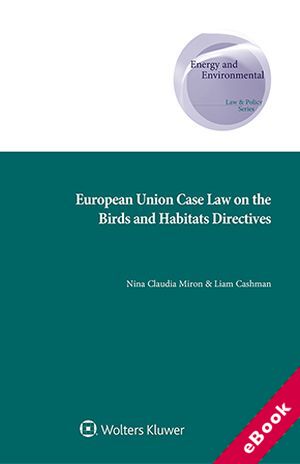We will be closed from 5pm Thursday 17th April for the Easter Bank Holidays, re-opening at 8.30am on Tuesday 22nd April. Any orders placed during this period will be processed when we re-open.

The device(s) you use to access the eBook content must be authorized with an Adobe ID before you download the product otherwise it will fail to register correctly.
For further information see https://www.wildy.com/ebook-formats
Once the order is confirmed an automated e-mail will be sent to you to allow you to download the eBook.
All eBooks are supplied firm sale and cannot be returned. If you believe there is a fault with your eBook then contact us on ebooks@wildy.com and we will help in resolving the issue. This does not affect your statutory rights.
European Union Case Law on the Birds and Habitats Directives is a comprehensive book focusing on the EU’s core legislation on nature, the Birds and Habitats Directives, and furnishing a detailed summary and analysis of the two directives as interpreted by the Court of Justice of the European Union. Despite the remarkable scope of EU conservation policy, and notwithstanding 30 years of relevant case law, nature in the EU continues to decline.
What’s in this book:
The book’s systematic structure provides the crucial details of a large body of cases the Court has decided following legal actions taken by the European Commission or preliminary references submitted by national courts. It enables a clear procedural understanding of how nature cases are brought before the Court and how the Court approaches matters such as the burden of proof and the entitlement of environmental associations to litigate disputes. Among the salient areas of analysis are the following:
How this will help you:
According to the 2020 Global Risk Report of the World Economic Forum, biodiversity loss will be one of humanity’s biggest threats in the next 10 years. If nature is to have any hope of recovering and prospering, strict application of existing nature conservation rules is of utmost importance, especially as a recent evaluation shows that, although the EU nature directives are fit for purpose, implementation on the ground is lagging. By setting out the case law systematically and explaining what compliance with specific requirements entails, this book makes a remarkable contribution to nature conservation practice. Lawyers, policymakers, and NGOs working in the domain of nature conservation will significantly benefit from it.